Sciatica Pressure Release: Exercises and Stretch Treatment Included
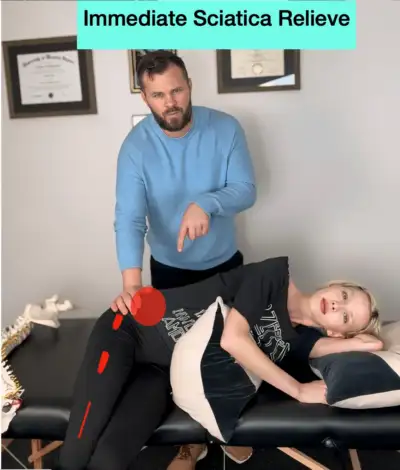
Sciatica is a condition that occurs when the sciatic nerve experiences a compression force on the sciatic nerve, usually from a herniated disc disorder in the lumbar spine. Severe pain is felt in the lower back and down the back of the thigh, lower leg, and foot. Numbness, tingling, and weakness increase the likelihood of sciatica from nerve compression.
This 2024 up-to-date article will detail the most effective method for quickly and efficiently reducing sciatica symptoms (in most cases).
Most Common Sciatica Causes:
- Herniated disc- most common
- Piriformis syndrome- less common
Best Therapy Position To Relieve The Painful Nerve (Straightaway)
The vast majority of patients I’ve worked with have a sciatica diagnosis resulting from a herniated disc protruding in the intervertebral foramen (IVF). The IVF is the hole through which the lower lumbar nerve roots exit the spine and combine to create the more significant nerve that travels down the back of the legs.
This firm cushion between the vertebrae travels or “herniates” into the IVF when a disc injury occurs. The effect is that the hole in which the sciatic nerve lives becomes smaller, and the nerve becomes compressed.
Best Treatments to Reduce Symptoms
Sciatica pain relief can occur by creating more space in the IVF, relieving the pressure on the nerve causing the sciatica.
The static opener relief position for sciatica can quickly relieve sciatica symptoms. Research has proven this position to reduce nerve compression, which causes sciatica symptoms. In some cases, it can “cure” the symptoms, and in most cases, it drastically reduces the symptoms of sciatica with leg pain.

The static opener instantly reduces pressure by effectively opening the IVF, creating space for the compressed nerve. This opening allows blood flow to return to the nerve instantly, and it is the mechanism that provides quick relief from sciatica.
The static opener performed as follows:
- Lie on your side with a large, comfortable pillow between your rib cage and pelvis. The painful side towards the sky.
- There should be no rotation in your spine; your shoulders and pelvis should be in line with each other.
- Completely relax, and you likely will notice an instance of relief from your sciatica
- Remain in this position for 3 minutes, then take a one-minute break (crucial)
Repeat this: 3 minutes on and one minute off for at least 15 minutes cumulative per day. Do not sleep in this position.

Advanced Stretch Position:
It’s the same process, but the legs hang off the side of a table to create a larger opening in the IVF.
From my experience, this relief position helps relieve sciatica nerve compression and symptoms in roughly 80% of patients.
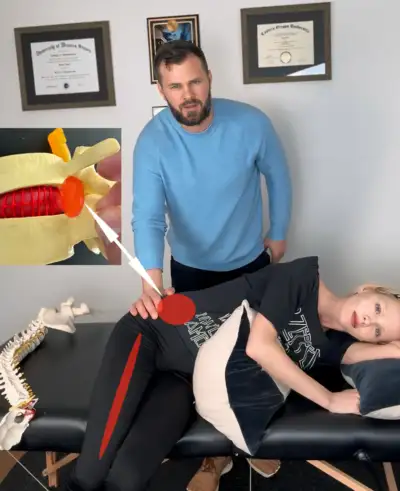
Pros:
1. Provides fast and safe relief from sciatica pain
2. Non-invasive and drug-free solution
3. Can be used at home or on the go for convenience
Cons:
1. May not provide long-term relief or address underlying causes of sciatica
2. Effectiveness may vary depending on the individual’s condition and severity of symptoms
Lifestyle Changes and Preventive Measures to Manage Lower Back and Leg Pain
Due to the majority of cases of sciatica being of spinal origin, many home remedies can help ease pain and prevent symptoms from becoming worse.
Above, you learn a comprehensive approach to relieve pressure on a compressed nerve in the IVF. Next, discuss how the disc comes to herniations and what movements you can avoid to worsen symptoms.
When the lumbar spine rounds, the disc material moves towards the nerve. Therefore, during the healing process, it’s best to limit forward bending of the lower back during movements such as sitting to standing and getting out of bed.
Exercises
How you move in daily activities, such as getting out of a chair, can dramatically worsen or relieve your sciatica symptoms.
Movement should be from the hips rather than the lower back to prevent compression on the nerve in the IVF.
Standing from a seated position should be performed similarly to powerlifting by doing a heavy squat. No low back flexion at all!
Additional Exercises
- Core Strengthening Exercises: Side planks
- Nerve flossing stretches to free up the compressed nerve and creates localized nerve movements in the hamstring muscle, calf, ankle, and foot joints.
- Piriformis stretches
- glutes strengthening exercises
- Hamstring stretches
Additional treatments to provide quick relief:
- Chiropractic
- Physiotherapy or physical therapy
- Massage Therapy
- Acupuncture
- Using hot or cold packs for 20 minutes can help to reduce inflammation and alleviate pain.
- Practice gentle stretching exercises to improve flexibility and relieve pressure on the sciatic nerve.
- Avoid activities that worsen your symptoms, such as sitting for long periods or lifting heavy objects (especially with a rounded lower back)
Medication Options
- Take over-the-counter pain medications such as ibuprofen, acetaminophen (NSAIDs), or Salicylates recommended by your doctor. Doctors may prescribe stronger prescription drugs like naproxen or topical medicines.
Surgery Options
- Microdiscectomy- Surgery to remove part of the disc that is causing compression
- Corticosteroid injections: Anti-inflammatory medicine that can instantly reduce pain.
Additional Considerations
- Ergonomic work environment: Posture and sitting positions can worsen symptoms
- Stress reduction: high levels of cortisol (stress hormone) can increase nerve pain
- Quit smoking: Smoking is a risk factor for sciatica
- Mind-Body techniques: practices like yoga and meditation
Final Thoughts on Finding the Right Treatment
It is important to consult with a healthcare professional before trying any new treatment for sciatica to ensure it is safe and effective for your specific condition.
This blog provides a comprehensive approach to home remedies, exercises, and stretches to quickly and efficiently relieve sciatica and its symptoms.
No rehabilitation or management program is complete without including nerve mobilization stretches and strengthening exercises for the core (abdomen), glutes, and hamstrings. Flexibility exercises for the hamstrings and muscles of the feet and ankles are vital for long-term relief.
Reach out to Dr. Dean (sports doctor) in California by texting (best), calling 323-354-6077, or emailing at drjustindean@gmail.com
Our editorial practices include evidence-based practices, interventions, and recommendations.
References
Medications
Static Opener
Core Exercises and Sciatica


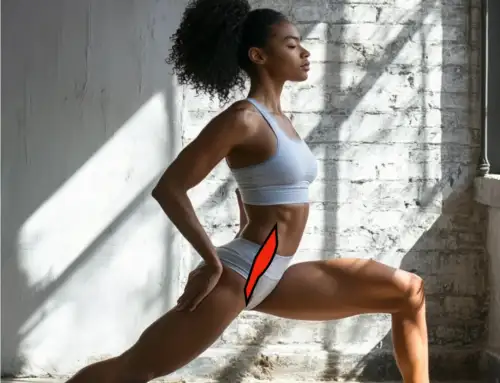
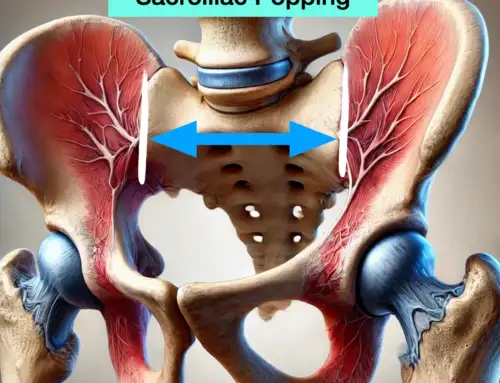
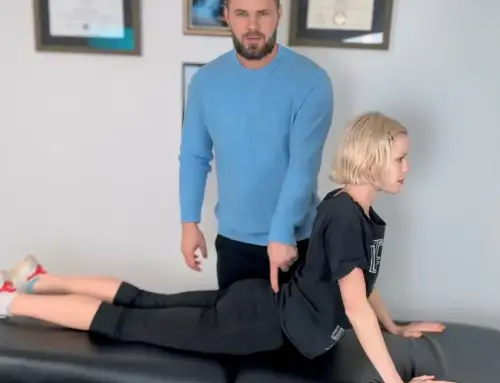
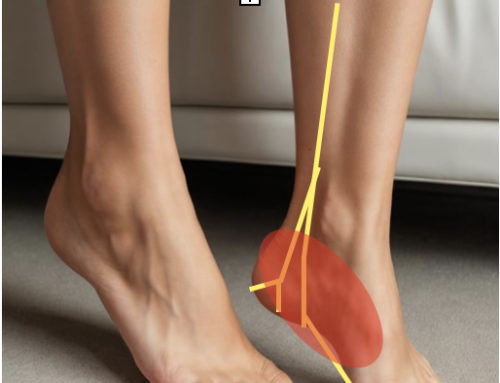
[…] Quick sciatica pain relief can also be achieved through specific manual relief positions. […]
[…] leg. A herniated disk, bone spurs, or spinal stenosis can compress nerves, causing intense pain. Simple relief positions for sciatica can aid in the reduction of this pesky […]